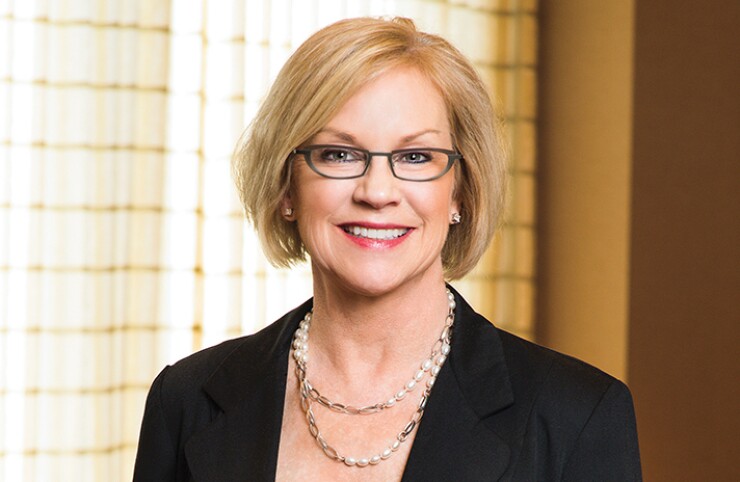Although she oversees one of the world's largest corporate technology teams, Cathy Bessant is not the kind of fervent cheerleader for digital breakthroughs that one encounters in Silicon Valley.
She urges businesses that are pursuing the use of artificial intelligence — one of the hottest areas of the tech sector — to do so with ethical guardrails. And she is all too aware of the downsides of rapid technological change, including the steep rise in cyberattacks in recent years.
That said, Bessant, who is American Banker's Most Powerful Woman in Banking for 2017, is a big believer in the power of technology.
She leads a team of nearly 100,000 employees and contractors in Bank of America's technology and operations unit, responsible for everything from innovation to cybersecurity to the technological underpinnings of a $2.2 trillion-asset banking company.
Moreover, she has emerged as a key thought leader regarding the digital revolution that is upending the banking sector.
"What is banking and what is technology? The two are one and the same," Bessant said in a recent interview.

Yet Bessant eschews the sort of change-the-world hype that permeates the tech sector. Her measured approach befits her decades of experience on the business side of the industry, including stints in corporate and small-business banking.
For example, Bessant is quick to acknowledge the many ways in which banks are different from fintech companies.
"Look, it's very attractive to say a bank should be a fintech company, and yet we're very different," she said. Those in the fintech sector are typically smaller, less regulated, and more agile than banks, "so they have a higher tolerance for one idea out of 10 working."
Like many banks, Charlotte, N.C.-based B of A is pursuing the deployment of artificial intelligence in areas such as marketing and risk management. But Bessant wants to be meticulous about how it eventually is used, to ensure the company does so in a responsible manner.
One hesitation has to do with the importance of keeping AI from replicating the biases of human beings. She also stressed the need for companies to focus on developing employees' skills, so that they still have jobs to perform after many of their current duties have been automated.
"Otherwise we run the risk of workforce decimation," Bessant warned.
See the most recent rankings:
•
•
•
Information security is one of Bessant's key areas of focus, and in 2016 she played an important role in the formation of the Financial Systemic Analysis and Resilience Center, a collaborative effort between companies in the private sector and U.S. government agencies to combat cybercrime.
The idea is to share information about threats in a real-time environment, rather than only in reports written after the danger has passed. Other banks that played a role in the organization's formation were Bank of New York Mellon, Citigroup, Goldman Sachs, JPMorgan Chase, Morgan Stanley, State Street and Wells Fargo.
"Collaboration makes us stronger, and we're learning that every day," Bessant said.
B of A expects to spend roughly $600 million in 2017 in the area of information security, which is handled by a team of 2,200 people across numerous countries.
"The intensity and breadth and depth of attack just grow exponentially over time," Bessant said.
"Success in protecting a company, I think, is quite dependent on having the best technology and the best talent. And so we invest heavily to do both."





